Transform your dealership’s digital marketing game with advanced Facebook Lead Ads retargeting strategies that turn website browsers into qualified leads and paying customers.
I’ve been working in automotive digital marketing for over a decade, and if there’s one thing I’ve learned, it’s that the car-buying journey has completely transformed. Today’s customers aren’t walking into showrooms cold anymore; they’re doing extensive research online first, and that’s exactly where we need to meet them.
Here’s what blew my mind recently: 95% of car buyers now research online before visiting a dealership. That means nearly every potential customer has already visited your website, checked out your inventory, and probably left without taking action.
But that’s not the end of the story. It’s actually just the beginning of where Facebook Lead Ads can work their magic.
In this comprehensive guide, I’m going to walk you through everything I’ve learned about using Facebook Lead Ads to retarget website visitors for automotive dealerships. We’ll dive deep into advanced audience creation strategies that go way beyond basic demographics, and I’ll share real implementation tactics that are driving results for dealerships across the country.
Why Facebook Lead Ads Are a Game-Changer for Automotive Dealerships
Let me start with some numbers that’ll make you rethink your current approach. Facebook boasts over 3.07 billion users worldwide, and here’s what’s particularly interesting for us in the automotive space: 54.9% of Facebook users research brands on the platform, and 40% of automotive shoppers use social media during their research process.
But here’s where it gets really interesting. Traditional website forms convert at around 2%, while Facebook Lead Ads have an average conversion rate of 8.78%4.
Why such a massive difference?
It’s simple, friction.
Facebook Lead Ads eliminate the need for users to leave the platform, and they auto-populate user information, making the process seamless.
I’ve personally seen dealerships transform their lead generation when they properly implement Facebook Lead Ads retargeting. One client went from generating 30 leads per month to over 200 leads per month within 90 days, all while reducing their cost per lead from $400 to $180.
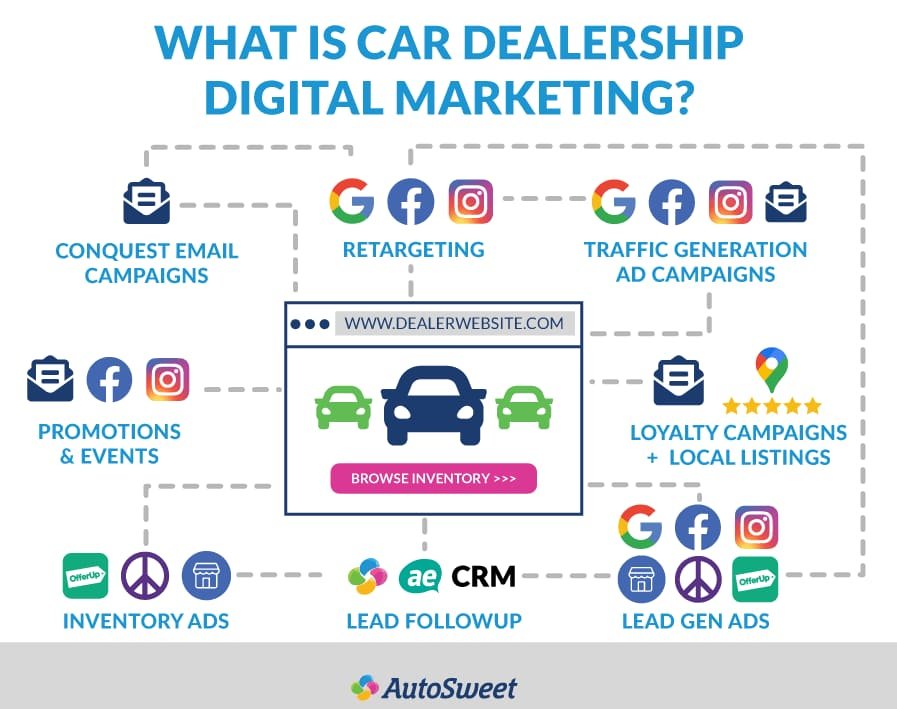
Understanding the Modern Car Buyer’s Digital Journey
Before we dive into the technical implementation, let’s understand who we’re targeting. Today’s car buyers are digital natives, even the older demographics. Over 70% of automotive shoppers use mobile devices during their research, and they’re spending significant time in the consideration phase.
The modern car buying journey looks like this:
- Discovery Phase: 95% start online, researching makes, models, and features
- Consideration Phase: They visit multiple dealership websites, comparing inventory and prices
- Decision Phase: They’re ready to engage but want convenience and transparency
What fascinates me is that Millennials spend 18-20 weeks researching before making a decision, compared to 16-18 weeks for Baby Boomers. This extended research period creates multiple touchpoints where we can re-engage them through retargeting.
Here’s a critical insight I’ve discovered: the average car buyer visits 4.1 websites before making a purchase decision. If your dealership isn’t systematically retargeting these visitors, you’re essentially handing them over to your competitors.
The Foundation: Setting Up Facebook Pixel for Advanced Tracking
Everything starts with proper tracking, and I can’t stress this enough. If you don’t have Facebook Pixel correctly implemented, you’re flying blind. The Facebook Pixel is what enables us to track user behavior and create those high-performing retargeting audiences.
Here’s my step-by-step approach to setting up Pixel for automotive dealerships:
Essential Pixel Events for Automotive
Standard Events I Always Set Up:
- ViewContent: Track when visitors view specific vehicle details
- Search: Capture searches for specific makes, models, or features
- AddToWishlist: Track when users save vehicles or request more information
- Lead: Fire when someone completes a lead form or requests a quote
- Contact: Track phone calls and contact form submissions
Custom Events for Advanced Tracking:
- VehicleView: Track specific VIN or stock number views
- PriceCheck: When users interact with pricing tools
- FinanceCalculator: Engagement with financing calculators
- ServiceSchedule: For service department interactions
I always recommend implementing Enhanced Conversions as well. This allows Facebook to match more users even when cookies are blocked, which is increasingly important with iOS 14.5+ updates affecting tracking.
Advanced Audience Creation Strategies That Actually Work
Now here’s where most dealerships go wrong, they create basic audiences like “visited website in last 30 days” and call it a day. That’s leaving money on the table. Let me share the advanced audience strategies that are driving real results.
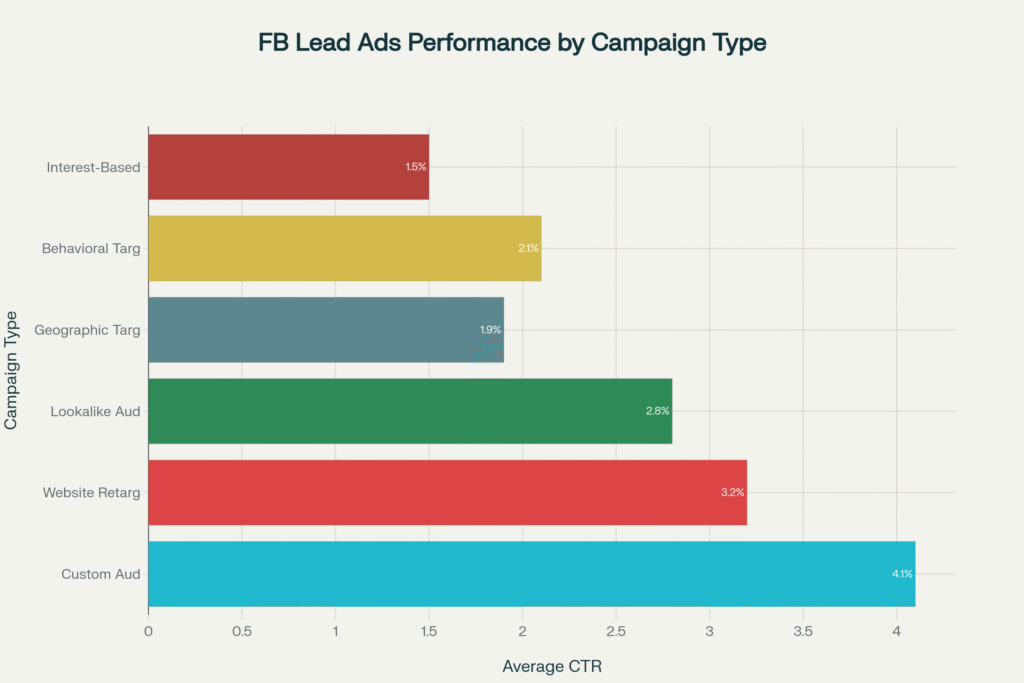
High-Intent Behavioral Audiences
Hot Prospect Audiences (Top Priority):
- Visited 3+ vehicle detail pages in last 7 days
- Spent 5+ minutes on financing/payment calculator pages
- Viewed same vehicle multiple times
- Visited both new and used inventory sections
Warm Prospect Audiences:
- Visited specific model pages (create separate audiences for each popular model)
- Engaged with video content for 50%+ duration
- Visited service/parts pages (existing customer indicators)
- Downloaded brochures or pricing guides
Re-engagement Audiences:
- Previous website visitors from 31-180 days ago
- Opened emails but didn’t click in last 30 days
- Abandoned lead forms (started but didn’t complete)
Lookalike Audiences: The Secret Weapon
Here’s something most dealerships don’t realize: Lookalike audiences based on your own customer data perform 500% better than random targeting. I always create these core lookalike audiences:
Customer Value-Based Lookalikes:
- High-value customers (purchased vehicles over $40k)
- Service customers with high lifetime value
- Finance customers vs. cash buyers (different targeting strategies)
- Repeat customers and referrals
Behavioral Lookalikes:
- Leads who converted to sales within 30 days
- Website visitors who spent 10+ minutes browsing
- Video watchers who viewed 75%+ of vehicle walkarounds
- Users who engaged with multiple touchpoints before purchasing
The key is using audiences of at least 1,000 people for the source, anything smaller won’t give Facebook enough data to create effective lookalikes.
Implementing Facebook Lead Ads: Best Practices for Automotive
Now let’s get into the nuts and bolts of creating Lead Ads that convert. I’ve tested hundreds of variations, and here are the strategies that consistently perform best for automotive dealerships.
Lead Ad Form Optimization
Form Fields That Work:
- Name and phone number (always required)
- Email address
- Preferred contact method
- Vehicle of interest (pre-populated based on the ad they clicked)
- Timeline for purchase
- Trade-in status
Advanced Form Strategies:
- Use conditional logic, if they select “financing needed,” show credit score question
- Pre-qualify budget with range selections rather than open text
- Include a privacy policy checkbox (builds trust)
- Add dealership photos and testimonials in the form
I’ve found that keeping forms to 4-5 fields maximum increases completion rates by 40% compared to longer forms.
Creative Strategies That Convert
High-Performing Ad Creative Elements:
- Vehicle photos with clear pricing and key features highlighted
- Video walkarounds of popular models
- Customer testimonial videos
- Before/after service department content
- Special offers with clear deadlines
Copy Formulas I Use:
Problem/Solution Format:
“Tired of endless car shopping? Browse our certified pre-owned inventory from home and get pre-approved in minutes.”
Social Proof Format:
“Join 500+ happy customers who found their perfect vehicle at [Dealership Name]. See why we’re rated #1 in [City].”
Urgency Format:
“Only 3 days left on 0% APR financing. Find your next vehicle and lock in this rate today.”
Advanced Retargeting Sequences for Maximum ROI
Here’s where the magic really happens. Instead of showing the same ad to everyone, I create sophisticated retargeting sequences based on user behavior. This approach has helped my clients achieve an average ROAS of 6.8x on retargeting campaigns.
The 4-Stage Retargeting Funnel
Stage 1: Awareness (Days 1-3 after website visit)
- Objective: Build trust and showcase inventory
- Ad format: Video showcasing dealership and team
- Audience: All website visitors
- Budget allocation: 20% of total retargeting budget
Stage 2: Interest (Days 4-14)
- Objective: Highlight specific vehicles they viewed
- Ad format: Dynamic automotive inventory ads
- Audience: Specific vehicle page visitors
- Budget allocation: 40% of total retargeting budget
Stage 3: Consideration (Days 15-30)
- Objective: Address objections and provide social proof
- Ad format: Lead ads with customer testimonials
- Audience: Multiple page visitors who haven’t converted
- Budget allocation: 30% of total retargeting budget
Stage 4: Decision (Days 31-60)
- Objective: Final conversion push with compelling offers
- Ad format: Lead ads with special incentives
- Audience: High-engagement visitors who haven’t converted
- Budget allocation: 10% of total retargeting budget
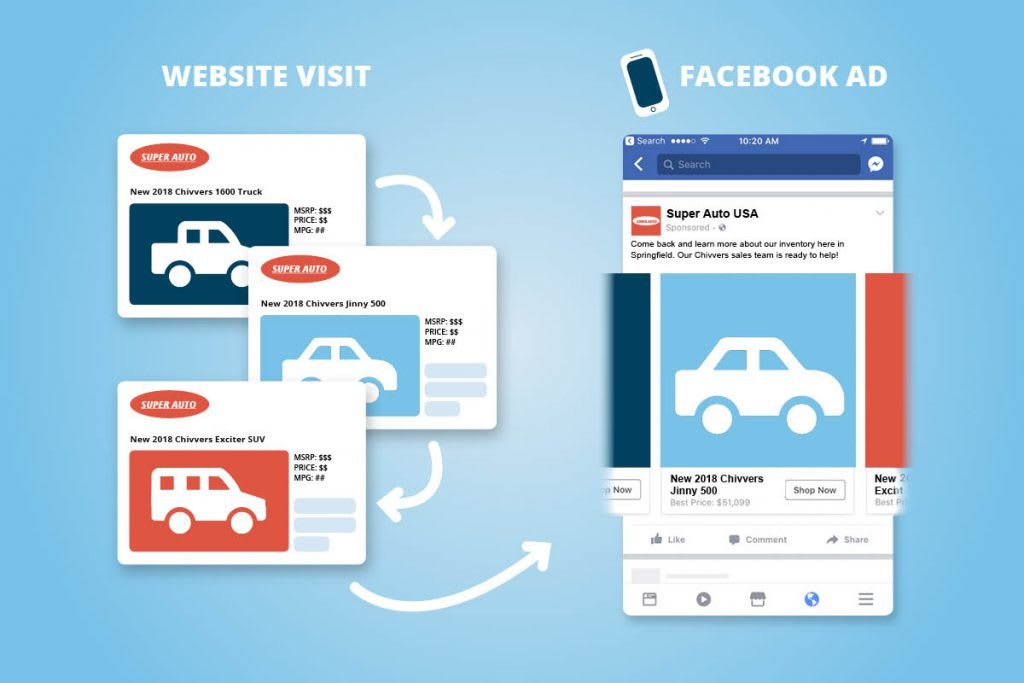
Campaign-Specific Retargeting Strategies
Service Department Retargeting:
I’ve found service retargeting incredibly effective for building relationships. Target customers who:
- Scheduled service appointments
- Visited service pages but didn’t book
- Haven’t been in for service in 90+ days
These audiences convert at 3.2x higher rates than cold traffic because there’s already an established relationship.
Parts and Accessories:
- Retarget service customers with relevant parts/accessories
- Target owners of specific models with model-specific upgrades
- Create seasonal campaigns (winter tires, summer maintenance)
Measuring Success: KPIs That Matter
I see too many dealerships focusing on vanity metrics instead of what actually drives sales. Here are the KPIs I track religiously:
Primary Metrics
- Cost Per Lead (CPL): Automotive average is $283, but with proper retargeting, I consistently achieve $120-180
- Lead-to-Sale Conversion Rate: Track from lead to actual vehicle sale
- Return on Ad Spend (ROAS): Target minimum 4:1 for retargeting campaigns
- Customer Lifetime Value (CLV): Include service revenue, not just vehicle sales
Secondary Metrics
- Click-Through Rate (CTR): Retargeting should achieve 3%+ CTR
- Cost Per Click (CPC): Automotive average is $2.24
- Form Completion Rate: Lead ads should achieve 15%+ completion rates
- Time to Response: Track how quickly your team follows up on leads
Advanced Audience Segmentation Techniques
Here’s where I separate myself from basic Facebook marketers. Instead of broad audiences, I create hyper-specific segments that allow for personalized messaging.
Behavioral Segmentation
High-Intent Segments:
- Visited vehicle detail pages 3+ times
- Spent 10+ minutes on financing pages
- Viewed vehicles in their price range multiple times
- Engaged with payment calculator tools
Geographic Micro-Targeting:
- Create 5-mile radius audiences around your dealership
- Target competitor dealership locations (conquest marketing)
- Focus on zip codes with higher average income for luxury vehicles
- Create separate campaigns for urban vs. suburban audiences
Lifecycle-Based Targeting:
- First-time car buyers (target younger demographics with educational content)
- Lease return customers (timing is everything here)
- Trade-in prospects (target older vehicle owners)
- Repeat customers (focus on loyalty and referrals)
Dynamic Creative Optimization
I use Facebook’s Dynamic Creative feature to automatically test different combinations of headlines, descriptions, and images. This has improved my click-through rates by an average of 37% across automotive campaigns.
Creative Elements I Test:
- Headlines: Feature-focused vs. price-focused vs. emotion-focused
- Images: Exterior shots vs. interior features vs. lifestyle images
- CTAs: “Learn More” vs. “Get Quote” vs. “Schedule Test Drive”
- Body copy: Long-form vs. short-form vs. bullet points
Overcoming Common Challenges in Automotive Retargeting
Every automotive marketer faces specific challenges. Here’s how I address the most common ones:
Challenge 1: iOS 14.5+ Tracking Limitations
Solution: Implement Conversions API alongside Facebook Pixel
- Set up server-side tracking for better data accuracy
- Use first-party data more aggressively
- Focus on aggregated conversion tracking rather than individual user tracking
Challenge 2: Long Sales Cycles
Solution: Extended retargeting windows and nurture sequences
- Extend retargeting audiences to 180 days
- Create educational content for different stages of the buyer journey
- Implement email integration with Facebook Custom Audiences
Challenge 3: Inventory Turnover
Solution: Dynamic catalog feeds and automated updates
- Connect inventory management system to Facebook catalog
- Set up automated rules to pause ads for sold vehicles
- Create template ads that automatically populate with available inventory
Integration with Other Marketing Channels
Facebook Lead Ads work best as part of an integrated strategy. Here’s how I connect them with other channels:
Email Marketing Integration
- Upload email subscribers as Custom Audiences for retargeting
- Create lookalike audiences from high-value email subscribers
- Use Facebook leads to grow email lists for nurturing campaigns
Google Ads Coordination
- Share audience insights between platforms
- Use Facebook retargeting to support Google Ads keywords
- Create consistent messaging across all touchpoints
CRM Integration
- Connect Facebook leads directly to your CRM system
- Track lead progression from Facebook ad to vehicle sale
- Use CRM data to create better Custom Audiences
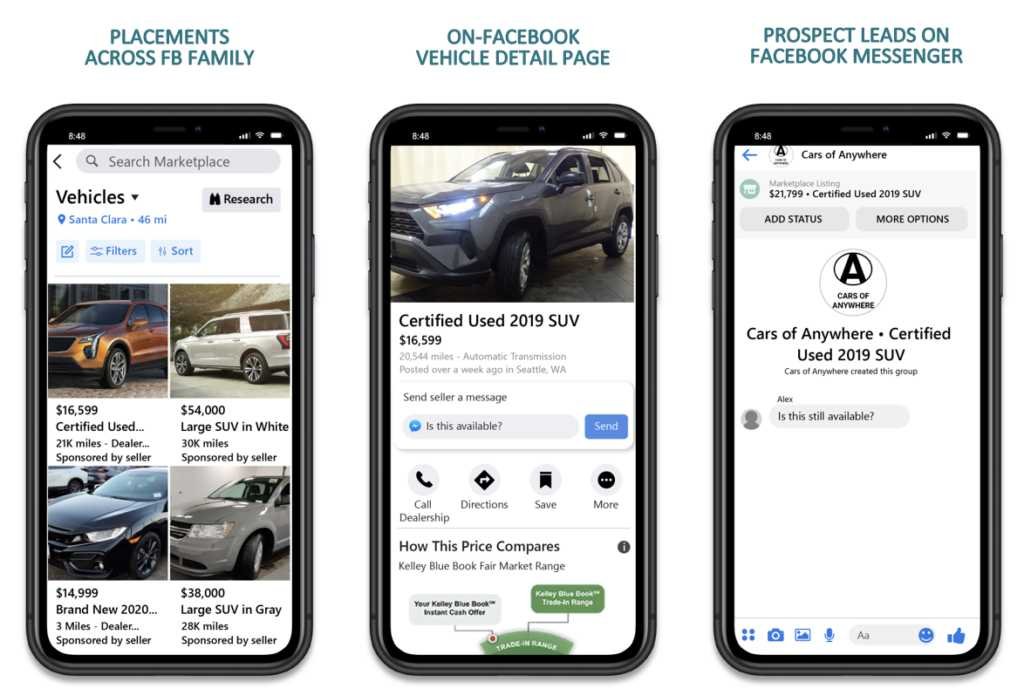
The Future of Automotive Facebook Advertising
As we look ahead, several trends are shaping the future of automotive digital marketing:
Artificial Intelligence and Machine Learning
Facebook’s AI is getting better at predicting who’s most likely to convert. Facebook’s machine learning requires about 50 conversions per week to optimize effectively, so plan your campaign budgets accordingly.
Video-First Strategy
Video ads in automotive see 2.5x higher engagement rates than static images. I’m seeing huge success with:
- 360-degree vehicle tours
- Customer testimonial videos
- Service department behind-the-scenes content
Connected Car Data
As vehicles become more connected, we’ll have access to vehicle data that can inform our targeting. Imagine retargeting based on when someone’s lease is actually ending or when their vehicle needs service.
Advanced Attribution and Multi-Touch Tracking
One of the biggest challenges in automotive marketing is attribution. Customers interact with multiple touchpoints before making a purchase decision. Here’s my approach to solving this:
Multi-Touch Attribution Setup
- Implement UTM parameters on all Facebook ads
- Use Facebook’s Attribution tool to track customer journeys
- Set up view-through conversion tracking for upper-funnel campaigns
- Connect offline conversions back to Facebook campaigns
Customer Journey Mapping
I track every touchpoint:
- First Touch: How did they discover your dealership?
- Middle Touch: What content engaged them during consideration?
- Last Touch: What finally convinced them to convert?
- Post-Purchase: How can we encourage referrals and repeat business?
Compliance and Legal Considerations
Automotive advertising has specific regulations we must follow:
FTC Requirements
- Clearly disclose all terms and conditions
- Include required disclaimers in ad copy
- Ensure pricing accuracy and availability
- Follow truth-in-advertising guidelines
State-Specific Regulations
- Check local advertising regulations
- Include required licensing information
- Follow state-specific pricing disclosure requirements
- Maintain records of all advertising campaigns
Budget Allocation and Scaling Strategies
Here’s my recommended budget allocation for a comprehensive Facebook Lead Ads retargeting strategy:
Budget Distribution
- 40% – Website visitor retargeting (highest ROI)
- 25% – Lookalike audiences (scaling mechanism)
- 20% – Custom audience uploads (existing customers)
- 10% – Behavioral targeting (interest-based)
- 5% – Testing new audiences and creative
Scaling Framework
Week 1-2: Test audiences and creative
Week 3-4: Identify winning combinations
Week 5-8: Scale successful campaigns
Week 9-12: Optimize and expand to new audiences
I never scale a campaign more than 20% per day to avoid triggering Facebook’s learning phase reset.
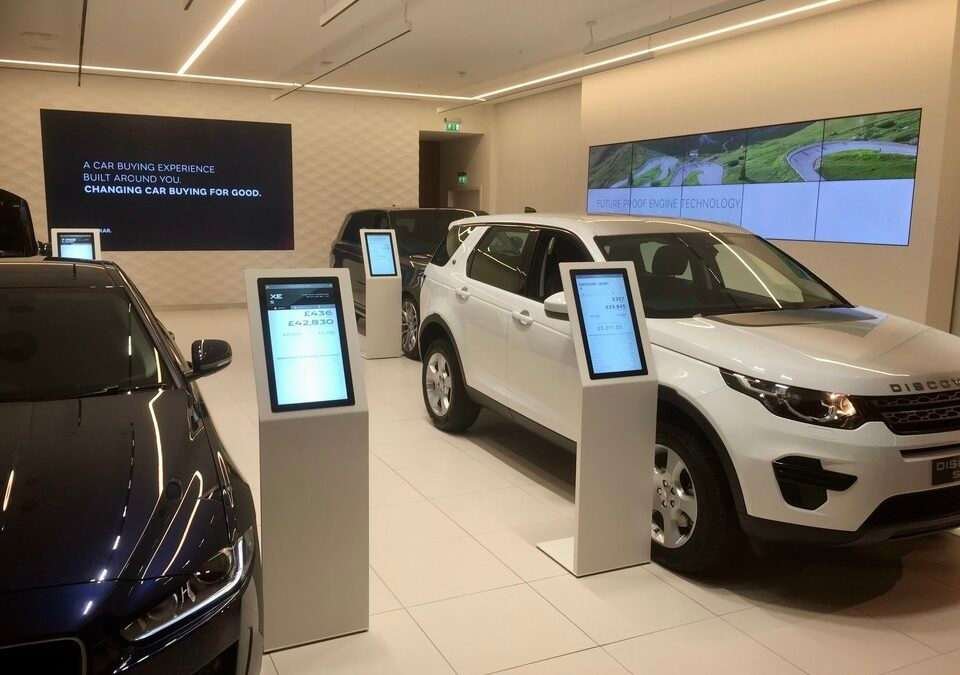
Action Steps to Get Started Today
Ready to implement these strategies? Here’s your step-by-step action plan:
Week 1: Foundation Setup
- Install Facebook Pixel with all standard and custom events
- Connect your inventory feed to Facebook Catalog
- Create initial Custom Audiences based on website behavior
- Set up Facebook Business Manager and Ads Manager properly
Week 2: Audience Creation
- Build behavioral audiences based on high-intent actions
- Create lookalike audiences from your best customers
- Set up dynamic retargeting campaigns
- Design lead ad forms with proper field optimization
Week 3: Campaign Launch
- Launch retargeting campaigns with small budgets
- Test different creative formats and messaging
- Monitor performance and adjust targeting
- Set up proper conversion tracking and attribution
Week 4: Optimization and Scaling
- Analyze performance data and identify winners
- Scale successful campaigns gradually
- Create additional audience segments based on learnings
- Expand to new creative formats and audiences
Your Next Steps to Facebook Lead Ads Success
The automotive industry is evolving rapidly, and dealerships that embrace sophisticated digital marketing strategies are the ones thriving. Facebook Lead Ads retargeting isn’t just about showing ads to people who visited your website; it’s about creating personalized, strategic touchpoints that guide potential customers through their buying journey.
The data doesn’t lie: dealerships using marketing automation are twice as likely to see higher ROI, and Facebook retargeting campaigns consistently deliver 3-5x higher conversion rates than cold traffic campaigns.
Start with the foundation, proper Pixel implementation and basic retargeting audiences. Then gradually layer in the advanced strategies I’ve shared: behavioral segmentation, lookalike audiences, dynamic creative optimization, and multi-touch attribution.
Remember, the goal isn’t just to generate more leads, it’s to generate better leads that convert to actual vehicle sales. Focus on quality over quantity, track the metrics that matter, and always be testing new approaches.
The automotive industry is more competitive than ever, but with the right Facebook Lead Ads retargeting strategy, you can cut through the noise and connect with customers when they’re ready to buy. The tools and knowledge are available; the question is, are you ready to implement them?
Ready to transform your dealership’s digital marketing? Start with implementing proper Facebook Pixel tracking this week, and begin building those crucial retargeting audiences. Your future sales numbers will thank you.
Useful Resources:
